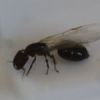Hi!
I'm a newbie to ant keeping, though I've spent a few months watching lots of ant videos. I know all about keeping them. But I have one big unanswered question: WHERE DO PEOPLE SEARCH FOR ANTS? I know that you look for camponotus in the rotten trees and pavement ants are found everywhere, but where do people usually search for them. I live in a city, but I also have a heavily wooded park across the street. Should I go looking for queens there?














